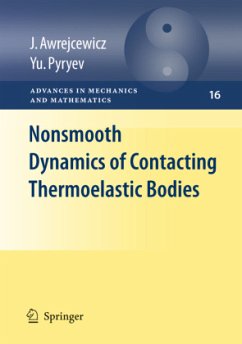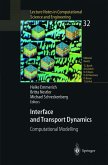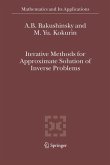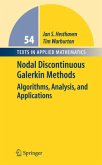This work is devoted to an intensive study in contact mechanics, treating the nonsmooth dynamics of contacting bodies. Mathematical modeling is illustrated and discussed in numerous examples of engineering objects working in different kinematic and dynamic environments.
Topics covered in five self-contained chapters examine non-steady dynamic phenomena which are determined by key factors: i.e., heat conduction, thermal stresses, and the amount of wearing. New to this monograph is the importance of the inertia factor, which is considered on par with thermal stresses.
Nonsmooth Dynamics of Contacting Thermoelastic Bodies is an engaging accessible practical reference for engineers (civil, mechanical, industrial) and researchers in theoretical and applied mechanics, applied mathematics, physicists, and graduate students.
In this work, methods of analysis and models of contacting systems dynamics, including heat generation and wear exhibited by such systems, are presented. It should be emphasised that the methods and mathematical models of contacting systems exhibited by rigid/elastic bodies and heat/wear processes have been so far applied separately. Tribological processes occurring on a contact surface were not taken into consideration in the analysis of the dynamic rigid or elastic body models. On the other hand, most of the introduced models of bodies in contact that took tribological e?ects into consideration did not allow for their inertia analysis. This study contributes to the development of this ?eld, as the models presented here yield prediction of the behaviour of contacting systems taking into account both mentioned aspects simultaneously. When considered from the mathematical point of view, the method of analysis is reduced to the solution of the system of di?erential equations describing the velocities of contacting bodies and Volterra integral equation modelling contact pressure. The latter equation is obtained with the use of the Laplace integral transform.
Topics covered in five self-contained chapters examine non-steady dynamic phenomena which are determined by key factors: i.e., heat conduction, thermal stresses, and the amount of wearing. New to this monograph is the importance of the inertia factor, which is considered on par with thermal stresses.
Nonsmooth Dynamics of Contacting Thermoelastic Bodies is an engaging accessible practical reference for engineers (civil, mechanical, industrial) and researchers in theoretical and applied mechanics, applied mathematics, physicists, and graduate students.
In this work, methods of analysis and models of contacting systems dynamics, including heat generation and wear exhibited by such systems, are presented. It should be emphasised that the methods and mathematical models of contacting systems exhibited by rigid/elastic bodies and heat/wear processes have been so far applied separately. Tribological processes occurring on a contact surface were not taken into consideration in the analysis of the dynamic rigid or elastic body models. On the other hand, most of the introduced models of bodies in contact that took tribological e?ects into consideration did not allow for their inertia analysis. This study contributes to the development of this ?eld, as the models presented here yield prediction of the behaviour of contacting systems taking into account both mentioned aspects simultaneously. When considered from the mathematical point of view, the method of analysis is reduced to the solution of the system of di?erential equations describing the velocities of contacting bodies and Volterra integral equation modelling contact pressure. The latter equation is obtained with the use of the Laplace integral transform.
From the reviews: "This monograph is devoted to methods of analysis and models of contacting systems dynamics, including heat generation and wears exhibited by such systems. ... The monograph is generally well written and well organized. Strength of the book is the quantity and variety of example nonlinear system considered. This book is accessible to readers with a fundamental knowledge of ordinary and partial differential equations and linear theory of thermoelasticity. The book can be highly recommended for experts in the theory of elasticity." (Igor Andrianov, Zentrablatt MATH, Vol. 1153, 2009) "In this very interesting book, models of frictional contact between solids including dynamics, heat generation and wear are presented and methods of solution are analyzed. This book is written in a very clear and very precise way, the bibliography is exhaustive and examples are numerous." (Frédéric Charles Lebon, Mathematical Reviews, Issue 2010 a)








